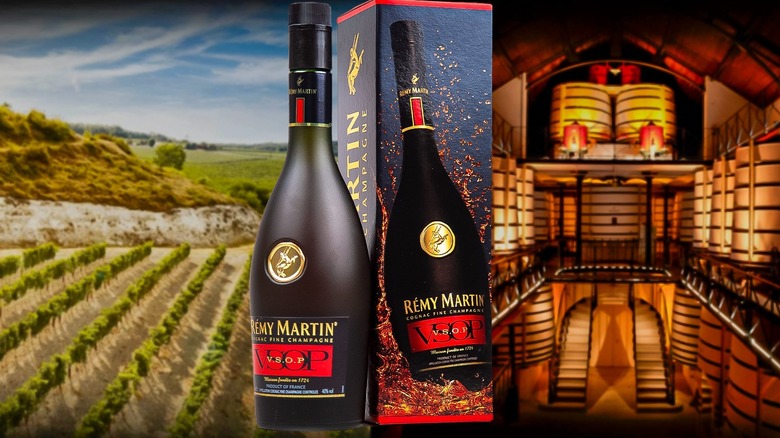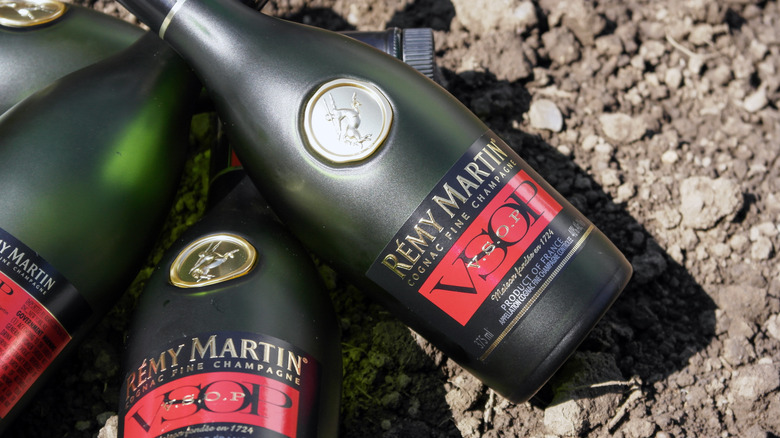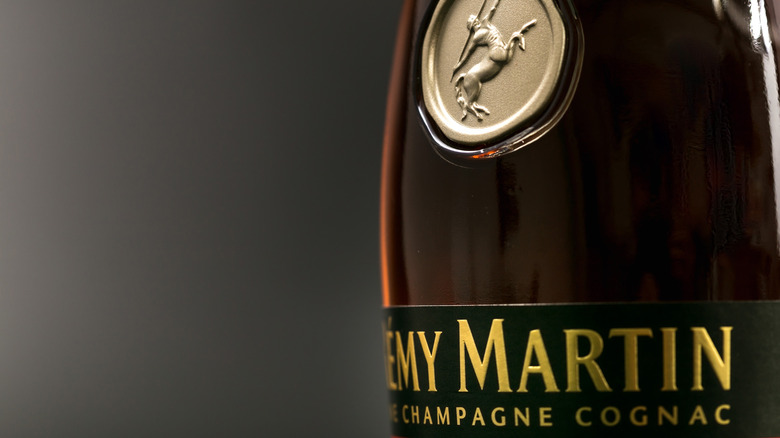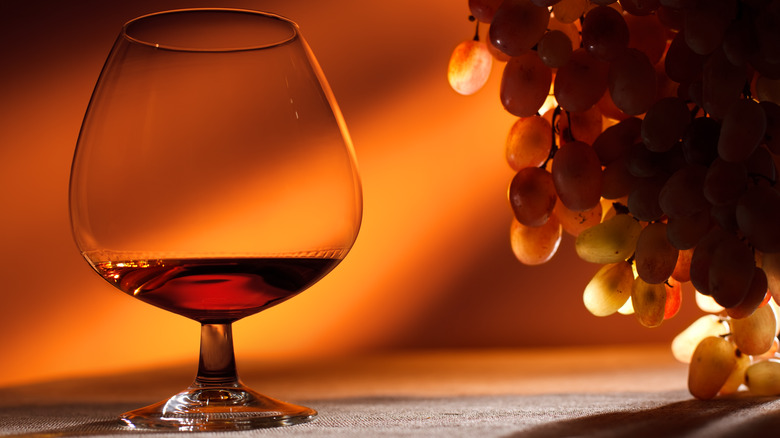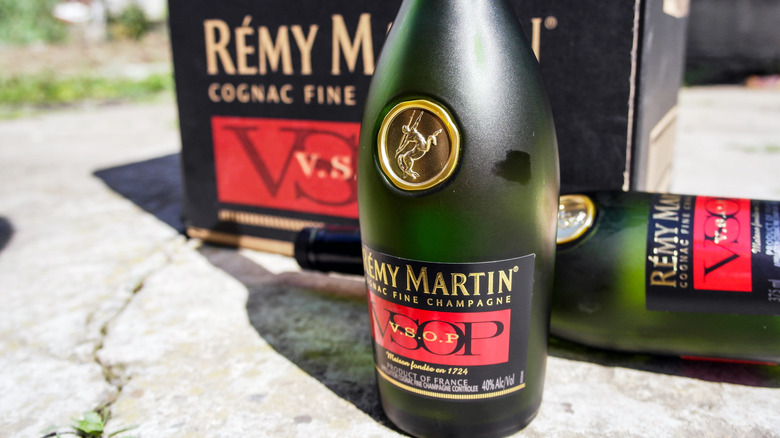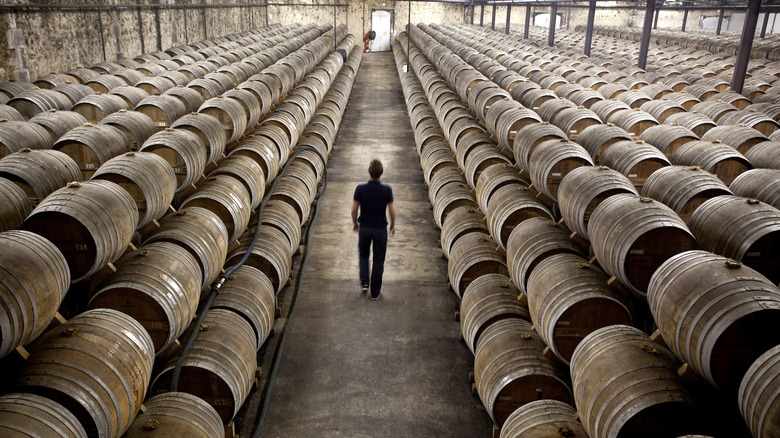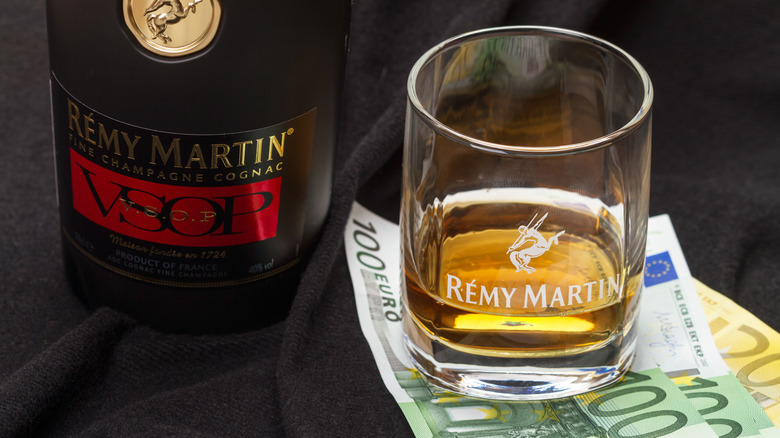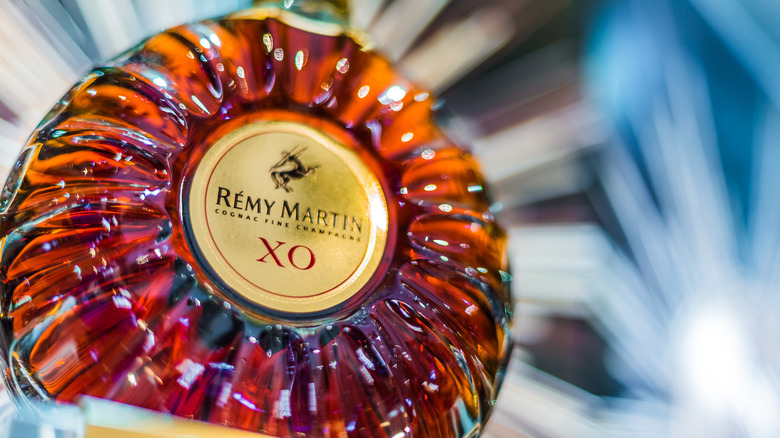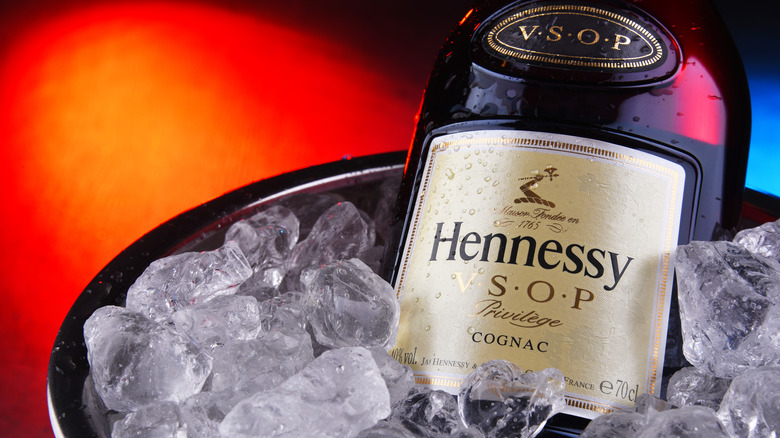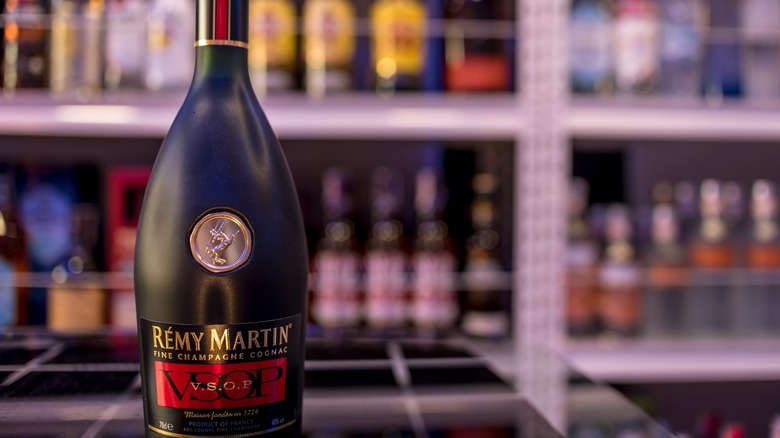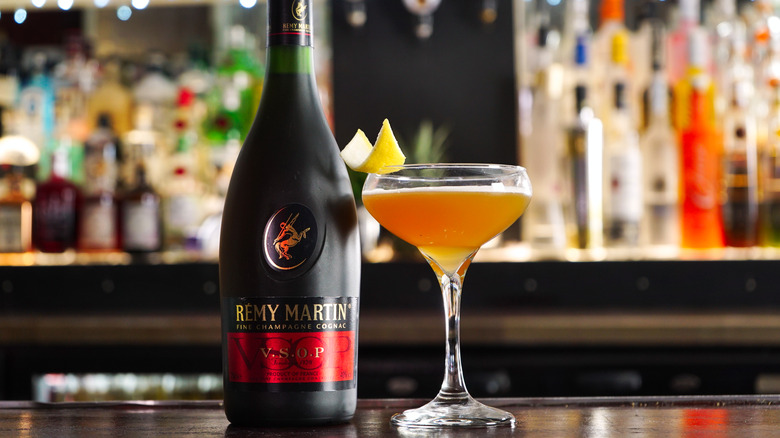Rémy Martin VSOP: The Ultimate Bottle Guide
The Rémy Martin VSOP is a timeless expression offered by one of the world's most recognizable brands of cognac. Coming from one of the big four cognac houses (along with Hennessy, Martell, and Courvoisier), Rémy Martin likes to separate itself from its rivals with its commitment to quality and distinctive approach to creating and marketing its products.
Now, while the VSOP is one of the more budget-friendly options among Rémy Martin's offerings, that hardly detracts from one's ability to enjoy it. After all, the VSOP is an excellent choice for anyone looking to sample the premium taste of a maturely aged cognac without breaking the bank.
If you're wondering what makes Rémy Martin's VSOP unique, what it tastes like, or why it may be the right spirit for you, we've got you covered. Having had the pleasure of experiencing this rich, refined liquor firsthand — with its impressive balance of sweet, fruity notes and subtle warmth — we decided to tackle those questions. Join us as we discuss this classic cognac in further detail and discover the nuances of the Rémy Martin VSOP.
What is VSOP cognac?
Cognac bottles often feature a set of lettering on the front label: VS, VSOP, or XO. Rather than a marketing trick, these letters represent an industry standard that alerts consumers as to how long a cognac has been matured – which offers a concurrent guide to a bottle's likely price range. For instance, cognacs with VS on the label — which stands for "Very Special" — are on the lower end of the aging spectrum and tend to be more affordable than other cognacs as a result.
VS cognacs feature eau-de-vie — I.E. the distilled wine used to make this type of brandy — that's been aged for at least two years. Other eau-de-vie used in the blend may have matured for longer than two years, but the VS label indicates the youngest alcohol featured in a bottle's blend. Moving along the age scale, VSOP stands for "Very Superior Old Pale" and contains eau-de-vie that's matured for at least four years — increasing the liquor's complexity and richness. Lastly, there is XO, which stands for "Extra Old." For this designation, the youngest eau-de-vie in the blend must be aged for no less than ten years.
You may be wondering why these terms are in English when cognac is a quintessentially French drink. Well, it seems the language was chosen simply to cater to English-speaking importers when cognac was first distributed worldwide — and the lettering is now ingrained with cognac drinkers around the world.
What does 'Fine Champagne' mean?
Anyone casting eyes on a bottle of Rémy Martin VSOP may see another term on the label that piques their interest: Cognac Fine Champagne. You'd be forgiven for thinking this relates to a standard type of bubbly champagne, but there's actually no correlation. Instead, this term is reserved for any cognac made with eau-de-vie exclusively from grapes harvested in either the Grand Champagne or Petite Champagne regions.
These are two of six crus (or growing areas) within the Cognac region of France where grapes can be grown and harvested to make cognac. To qualify as Cognac Fine Champagne, the liquor must contain at least 50% of its eau-de-vie from Grand Champagne-grown grapes with the rest from the Petite Champagne region.
Now, while cognacs are often made with grapes from multiple crus, Rémy Martin only appears to use grapes from one of the two Champagne areas — including in its VSOP variety. This means you won't see Cognac Fine Champagne printed on every single bottle of cognac in existence, but you are apt to see it on every single Rémy Martin product.
Rémy Martin VSOP is blended from hundreds of eau-de-vie varieties
Though we mentioned earlier that eau-de-vie is the type of brandy used to make cognac blends, it may remain unclear exactly what eau-de-vie is. Translated in English as 'waters of life,' eau-de-vie (sometimes styled as 'eaux-de-vie') is a clear fruit brandy — one that starts with fermenting grape juice into wine. Next, the wine is twice-distilled to create the brandy, which is then placed in oak barrels to mature into eau-de-vie (which takes at least two years).
While the process is very similar to standard bandy production, the differences lie in the precise legal regulations for cognac production in France, including the origin of the grapes and the precise distillation techniques. When it comes to Rémy Martin VSOP, the popular cognac contains an impressive blend of hundreds of different eau-de-vie in each bottle.
Given the Rémy Martin VSOP appears to be made with more than 200 different eau-de-vie varieties, each sip provides the perfect symphony of deep and complex flavors (thanks to the wide range of characteristics found in the various batches). The high number of eau-de-vie varieties ensures Rémy Martin VSOP offers a unique yet balanced flavor profile — one that simultaneously meets its quality requirements.
Who is Rémy Martin?
The brand's history can be traced back to 1724 when a winemaker by the name of (you guessed it!) Rémy Martin decided to make and sell cognac. Martin's commitment to quality was there from the very beginning — as evidenced by him receiving permission to plant new vines in France from King Louis XV in 1738. The unique honor was bestowed upon Martin given his cognac's reputation for superior quality, which only continued to blossom over time.
After a century in business, the brand continued to thrive, with Paul-Émile Rémy Martin — a descendant of the founder himself — overseeing its expansion beyond Europe. Along with spearheading its international growth during the 19th century, Paul-Émile was responsible for introducing the company's iconic centaur logo, as well, while continuing the tradition of excellence established by its founder and namesake. In 1924, André Renaud took over as the company's first cellar master (and eventually chairman), and continued the global expansion set forth by Paul-Émile.
A big part of this was through the standardization of how Rémy Martin created and marketed its products. This involved the introduction of its VSOP version in 1927, followed by its 1948 decision to only use grapes grown in the Petite Champagne and Grande Champagne crus for all Rémy Martin products. Frankly, with the brand's 300th anniversary set for 2024, there's little doubt its continued commitment to quality would make Rémy Martin (the man) proud.
History of Rémy Martin VSOP
Though Rémy Martin VSOP wasn't introduced until 1927, its history can, in part, be traced back more than a century before. After all, in 1817, the company's rival, Hennessy, received a request to create a 'Very Superior Old Pale' for the soon-to-be King George IV. Now, obviously, Rémy Martin didn't follow suit with its own VSOP product right away. It instead waited over 100 years to begin selling its first Fine Champagne VSOP.
By the early 20th century, it had become clear that a growing demand for premium cognacs existed (such as those with a VSOP distinction). Refusing to be left behind, Rémy Martin created its VSOP line to ensure the brand continued to stand out from the competition. Now, even though Rémy Martin was late to the party, its VSOP quickly became one of the most recognizable expressions in the industry.
These days, almost every brand of cognac on the market sells its own VSOP. And while Rémy Martin VSOP was initially old in a fairly standard bottle, that changed in 1972 when the brand introduced its now-iconic frosted bottle. This design has changed little since its introduction, making the VSOP instantly recognizable to consumers across the globe.
How is Rémy Martin VSOP made?
We briefly touched on how eau-de-vie is made ... but what exactly goes into the creation of the Rémy Martin VSOP? It all starts with carefully selecting grapes obtained through partnerships with local winegrowers to ensure the grapes are up to its standards. Since grapes are generally harvested at the end of summer, the distillation process for Rémy Martin VSOP tends to run from October to March.
One of the most interesting facts about this process is that it takes a rather astonishing 26 pounds of grapes to create a single liter of eau-de-vie; in other words, the next time you sip a glass of Rémy Martin VSOP? Take a moment to appreciate the incredible volume of fruit used to make it. Once the eau-de-vie is checked for quality, it's barreled for the maturation process. This is done in oak barrels made from trees grown in the forests found in the Limousin region.
As with any spirit, the wood plays a significant role in the character of its contents, with Limousin oak known for imparting a vanilla flavor to the cognac. After aging for a minimum of four years (as required for VSOP), the company's master blender carefully selects and blends the eau-de-vie to create the top-shelf Cognac Fine Champagne found in each bottle of Rémy Martin VSOP.
What does Rémy Martin VSOP taste like?
While the VSOP is one of Rémy Martin's cheapest cognacs, it's worth noting the brand doesn't offer low-budget drinks (it doesn't appear to sell a VS cognac as of December 2023, for instance). Since Rémy Martin leans more heavily into its reputation as a purveyor of premium alcoholic beverages, you can expect a sophisticated drink with its VSOP alongside a well-balanced flavor profile – one developed while its eau-de-vie ages for at least four years.
The quality of Rémy Martin VSOP is apparent from the first scent, as numerous enticing aromas emanate from inside each bottle. The most dominant of these is vanilla and ripe apricots, but you'll also enjoy some floral undertones and oak on the nose. From there, you get a nice combination of stone fruits (like peach) on the palate before a hint of sweet honey and vanilla notes. The influence of the Limousin oak barrel is notable, as well, with a lovely foundation of spicy warmth and notable tastes of cinnamon and nutmeg.
The tasting experience is supported by a silky mouthfeel that adds to a highly enjoyable pour. The finish is satisfyingly long, with the warmth and vanilla carrying through to the end. It may not have the depth of its premium XO cognacs, but the Rémy Martin VSOP still deserves praise for its versatility and accessibility. It's an excellent choice for both connoisseurs and those new to the world of cognac.
Rémy Martin VSOP vs. Rémy Martin XO Excellence
As you (hopefully) remember from before, a VSOP cognac needs to be aged for a minimum of four years, while an XO expression requires at least ten years of maturation. Due to this, you can immediately sense these two offerings cater to different preferences (and price ranges).
With its greater age, the Rémy XO Excellence brings exceptional depth and complexity to each sip, and undoubtedly takes luxury to the next level. The XO Excellence offers an impressive blend of flavors, including the sweetness of caramel and toffee. Figs, apricots, and raisins delightfully join it on the palate, too, which are underpinned by a warm spice. The finish of the XO is also incredibly long, as you'd expect from the extended aging process. In that sense, we can't hide (and won't) hide the fact that the XO Excellence is a few levels above the VSOP when it comes to the tasting experience. But it also comes at a steeper price, as the Rémy Martin XO Excellence is far more expensive than the VSOP.
In terms of price, the VSOP is much closer to the Rémy Martin 1738 Accord Royal. The 1738 has an impressive blend of sweet flavors, including butterscotch and ripe fruits, while the VSOP is more vibrant than the 1738 and isn't as fruity. The choice comes down to personal preference, but we think the slightly cheaper VSOP remains a perfect gateway to premium cognacs.
Rémy Martin VSOP vs. other VSOP cognacs
There is a wide range of cognac brands, and most produce a VSOP. Each VSOP showcases unique characteristics that may appeal more to your palate than others (four different people may have four entirely different opinions, after all). Now, each VSOP sold by the other three major cognac houses is undeniably impressive. But we have no doubt the Rémy Martin VSOP more than holds its own against its rivals — especially with its focus on only using grapes from Grand Champagne and Petite Champagne.
Hennessy was the first to create this type of expression, and its modern-day version prominently displays its floral and fruity notes. The Courvoisier VSOP tastes a little different and has a richer mouthfeel, along with being sweeter and having a more notable oak influence. The Martell offering is quite similar to that of Hennessy as it's also notably floral, though it's especially fruity, as well.
Of course, the world of VSOP cognac extends well beyond these four brands. So if you try and love the Rémy Martin VSOP, you'll have a fantastic time exploring the nuances of other cognac brands until you find your favorite.
Is Rémy Martin VSOP expensive?
If you're used to picking up bottom-shelf spirits but want to try something a little more sophisticated, then yes: Rémy Martin VSOP may seem expensive. However, in terms of being able to enjoy a mature, aged, high-quality cognac, the VSOP is quite affordable. As of December 2023, the average price for Rémy Martin VSOP is around $50 for a 750-milliliter bottle (which actually seems cheap compared to the average $200-plus price tag of its XO Excellence).
Now, whether or not the VSOP is too pricey depends on each person's budget. But we think the Rémy Martin VSOP finds the sweet spot between offering a high-caliber drink without breaking the bank for most people. The price seems more than fair, in fact, when you consider the craftsmanship that goes into each bottle. That being said, if you've never had cognac before? We might not recommend the VSOP right away, and suggest you start by sampling a VS offering from the likes of Courvoisier or Hennessy.
However, if you know you like cognac (or even just brandy), then the VSOP is a brilliant way to expand your horizons — and take a step towards something a little more special. Rémy Martin VSOP may not be cheap, per se, but we still think it represents excellent value for those wanting a premium cognac without the XO price tag.
How to drink Rémy Martin VSOP?
During an interview with Rémy Martin's cellar master, Baptiste Loiseau, he told us a premium aged cognac is best enjoyed neat at room temperature. However, for a less maturely aged cognac, such as the VSOP, it's more than acceptable to enjoy them in a cocktail of some sort.
Now, the choice of how you consume VSOP is ultimately yours, of course. But we'd suggest you try the VSOP neat at least once to enjoy its lovely aromas and delightful blend of flavors. Then again, as long as you're appreciating the delights of a VSOP cognac? You can drink it any way you want (who's going to stop you?). Plus, for those interested in mixology, Rémy Martin VSOP brings an undeniable touch of sophistication to cocktails. Its vibrant and versatile character makes it an excellent choice for Cognac-based drinks such as the classic sidecar.
Additionally, Rémy Martin advises folks to consider the type of glass they use when drinking cognac. Different glasses can affect the texture and aromas of the cognac, so it's a great idea to experiment with various types to see which you prefer. More than that, if you're interested in high-quality spirits, it might make sense to invest in some high-quality glassware to go with your high-quality alcohol.
